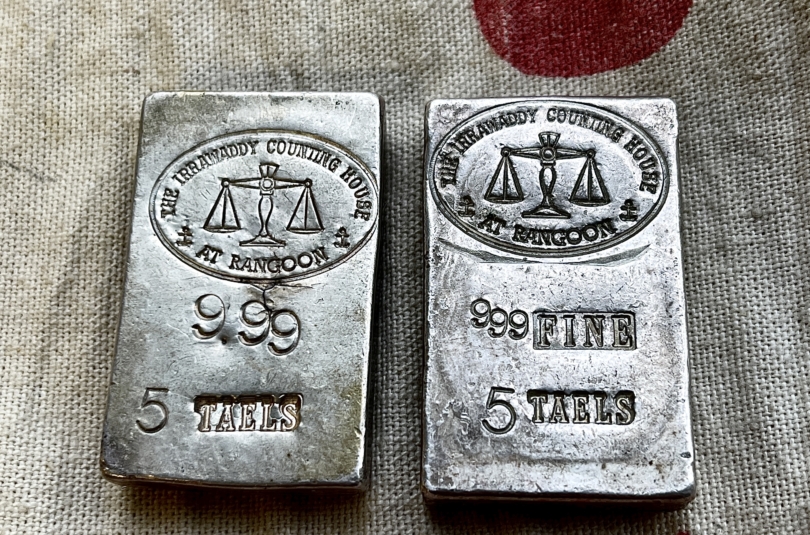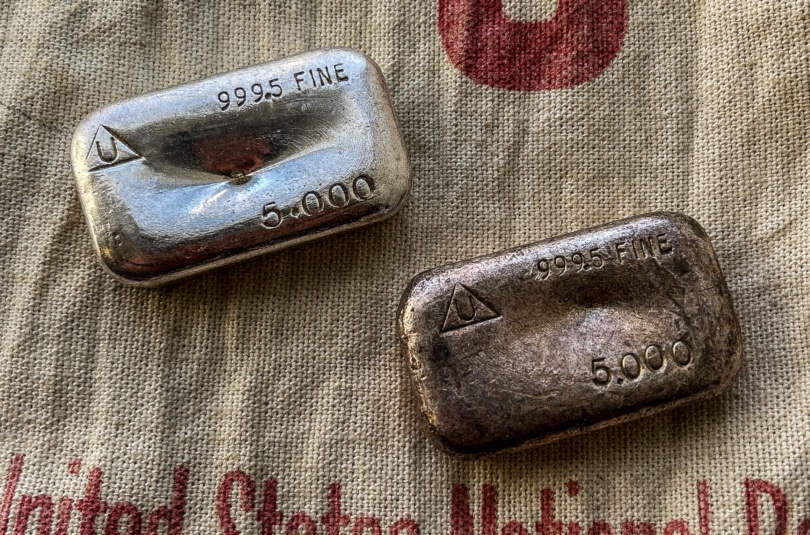The markings on silver bars tell you a lot about the piece of precious metal you’re holding in your hands. As long as coinage has been in practice, silversmiths have been marking their work to prove the quality of their metals as well as using these markings as a sort of signature to indicate that they crafted the piece rather than someone else.
One of the quickest and easiest ways to check your silver bars for authenticity is by checking their markings. Each manufacturer has its own specific way of marking its bars. Still, standard markings include the manufacturer’s or refiner’s logo and the serial number, hallmark, weight, and the purity of the bar. The Good Delivery specification was created by the London Bullion Market Association in order to specify characteristics of gold and silver bars acceptable for wholesale to the London bullion market. As long as you can identify these markers, there is a good chance that your bar is authentic. Let’s take a closer look at what each of these markings means.
Purity
The most important aspect of the silver bar is how pure it is. The higher the purity, the higher the value of the bar. If you have a genuine silver bar, it should be marked as .999 fine silver. This means that the silver bar in your hands is 99.9% silver and .1% other metals. For jewelry making, sterling silver is often used, which has a purity of .925. The additional 7.5% is generally made of copper.
Silver generally does not come out of the Earth as pure 100% silver. Before being mined, silver spends its life underground, mixing with other elements inside the Earth. Once mined, the metal is refined, removing as much as the outside elements as possible, and increasing its purity.
Investment-grade silver has to be .999 or better and is considered “fine” silver. This is referred to as its “millesimal fineness,” and it means that only one-tenth of one percent of the mass of the silver is due to impurities. Most refineries and mints have .999 as their default, but the Royal Canadian Mint’s investment-grade coins and some from the Perth Mint are made from 99.99% silver, or .9999 silver.

Weight
Silver bars come in several sizes, with the most common sizes being 1oz, 5oz, 10oz, and 100oz. You can also find bars in odd sizes, such as 1/2oz, 2oz, 50oz, and even 1000oz. Many investors go with the smaller sizes because they are easier to stack neatly, making storage of their bars reasonably easy.
Worldwide, the most commonly traded size of a silver bar is the 1 troy oz bar. In fact, it is so common that when people refer to a silver bar, this is generally the size they’re referring to. While most places use the metric system for measurements, this size bar is still produced in many countries due to its popularity.

When browsing silver bars to potentially purchase, you should consider the weight carefully. It takes the same effort for refineries to smelt a bar of silver, whether that bar is 1 ounce or 100, which means the premium you will pay on smaller bars will be greater than the premium you will pay on larger bars. Though, if you stick to larger bars such as 100-ounce, you may find increased difficulty or expense in selling them when the time comes.
Serial Number
While the serial numbers on silver bars are not always traceable, they serve a purpose. There isn’t a database of silver bar serial numbers, but individual mints and manufacturers generally record the serial numbers they produce. Additionally, if you had a bar that was stolen and you can show proof of your serial number, that makes things easier when trying to recover your stolen property.
Some people may be concerned if they come across a bar with no serial number, but don’t worry. It is usual for certain minting companies not to include a serial number on their products. Surprisingly, many individuals prefer bars that don’t have a serial number even though serial numbers aren’t linked to a specific owner. These people like the anonymity of making an investment that can’t easily be traced or tracked.

Serial numbers will be an essential consideration if you plan to buy silver and then subsequently have it insured. It will be unlikely that you will be able to ensure that any silver bars that are not from a reputable mint possess correct serial numbers. It would be nearly impossible for law enforcement to locate stolen bars without identifying marks beyond the purity, weight, and possible hallmark stamp.
Hallmark
The hallmark on the silver bar is generally a pattern on the back that indicates the name of the manufacturer or producer. Some companies have been producing silver items for centuries in the UK, using the same hallmark to identify their work. Overall, as long as your silver bars are marked as .999 silver, the company that made the bars doesn’t matter too much. Although, many investors do like to stick with the same company/brand throughout their collection. When you’re dealing with silver bars, some of the more popular companies worldwide include Johnson Matthey, PAMP Suisse, A-Mark, and Sunshine Minting Co.
Identifying Silver Bars Can Be Simple
When you’re shopping for poured silver bars, keeping track of all the various markings will eventually become second nature. Until then, however, it’s essential to use the marks to determine what kind of silver you’re looking at, what size bar, where it was made, and if it is an individual with a unique serial number.
This will help protect you from investing in fraudulent silver or counterfeit bars, but it will give you the best chance of finding a buyer for your silver whenever the time comes that you want to sell some or all of it.




